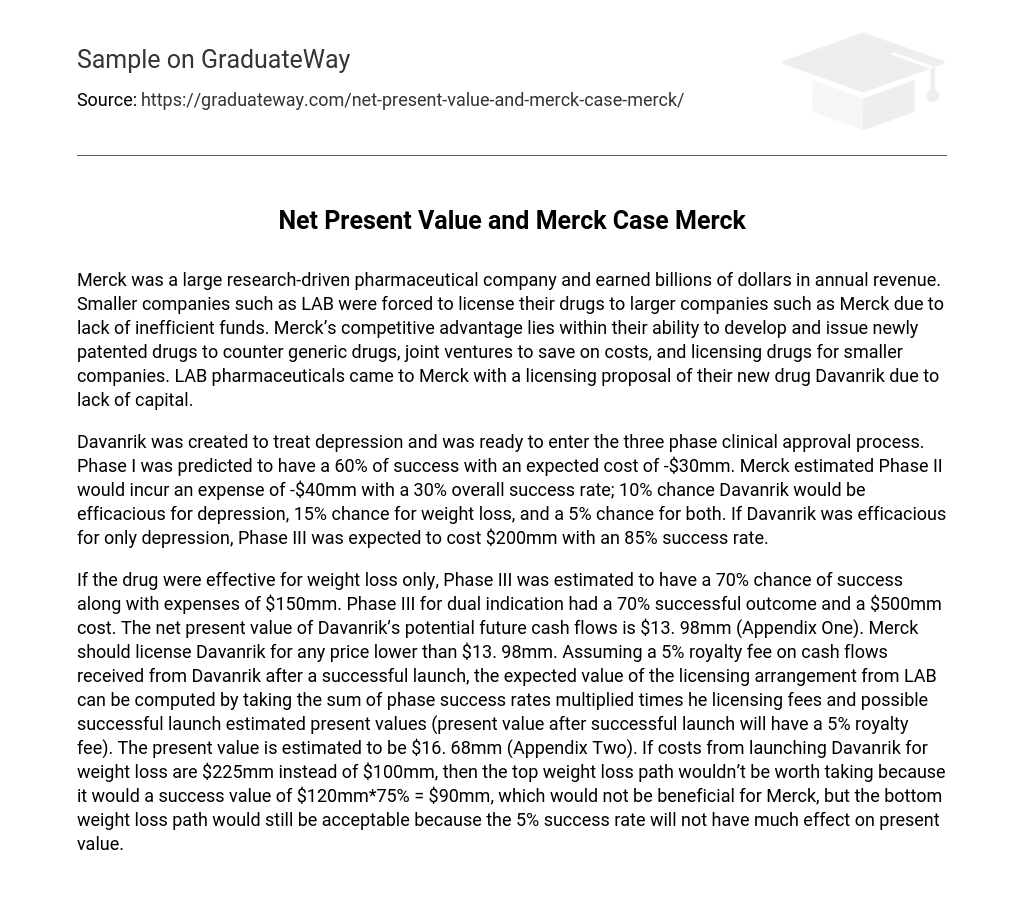Merck was a large research-driven pharmaceutical company and earned billions of dollars in annual revenue. Smaller companies such as LAB were forced to license their drugs to larger companies such as Merck due to lack of inefficient funds. Merck’s competitive advantage lies within their ability to develop and issue newly patented drugs to counter generic drugs, joint ventures to save on costs, and licensing drugs for smaller companies. LAB pharmaceuticals came to Merck with a licensing proposal of their new drug Davanrik due to lack of capital.
Davanrik was created to treat depression and was ready to enter the three phase clinical approval process. Phase I was predicted to have a 60% of success with an expected cost of -$30mm. Merck estimated Phase II would incur an expense of -$40mm with a 30% overall success rate; 10% chance Davanrik would be efficacious for depression, 15% chance for weight loss, and a 5% chance for both. If Davanrik was efficacious for only depression, Phase III was expected to cost $200mm with an 85% success rate.
If the drug were effective for weight loss only, Phase III was estimated to have a 70% chance of success along with expenses of $150mm. Phase III for dual indication had a 70% successful outcome and a $500mm cost. The net present value of Davanrik’s potential future cash flows is $13. 98mm (Appendix One). Merck should license Davanrik for any price lower than $13. 98mm. Assuming a 5% royalty fee on cash flows received from Davanrik after a successful launch, the expected value of the licensing arrangement from LAB can be computed by taking the sum of phase success rates multiplied times he licensing fees and possible successful launch estimated present values (present value after successful launch will have a 5% royalty fee). The present value is estimated to be $16. 68mm (Appendix Two). If costs from launching Davanrik for weight loss are $225mm instead of $100mm, then the top weight loss path wouldn’t be worth taking because it would a success value of $120mm*75% = $90mm, which would not be beneficial for Merck, but the bottom weight loss path would still be acceptable because the 5% success rate will not have much effect on present value.





